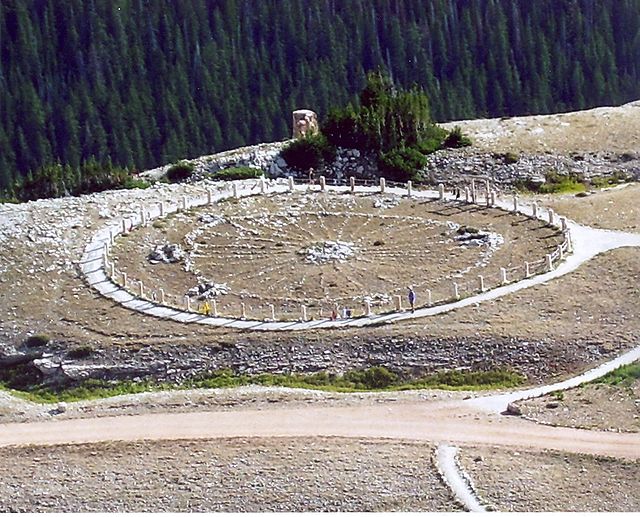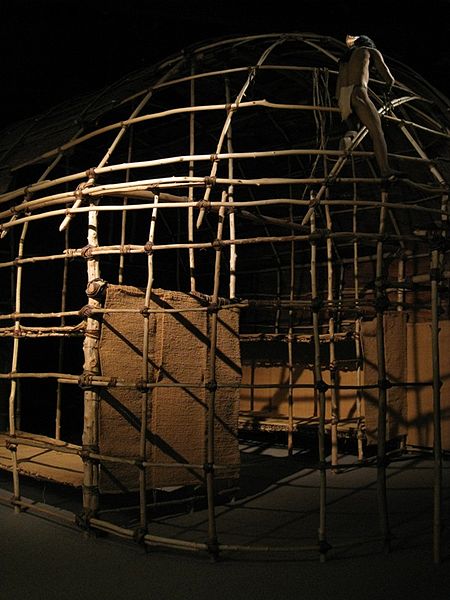Historically, most medicine wheels follow a similar pattern of a central circle or cluster of stones, surrounded by an outer ring of stones, along with "spokes" radiating from the center out to the surrounding ring. Often, but not always, the spokes may be aligned to the cardinal directions. In other cases, some stones may be aligned with astronomical phenomena. These stone structures may be called "medicine wheels" by the Indigenous nation which built them, or by more specific names in that nation's language.
The Medicine Wheel in Bighorn National Forest, Wyoming, US
The Medicine Wheel in Bighorn National Forest, Wyoming
Native American religions
Native American religions are the spiritual practices of the Native Americans in the United States. Ceremonial ways can vary widely and are based on the differing histories and beliefs of individual nations, tribes and bands. Early European explorers describe individual Native American tribes and even small bands as each having their own religious practices. Theology may be monotheistic, polytheistic, henotheistic, animistic, shamanistic, pantheistic or any combination thereof, among others. Traditional beliefs are usually passed down in the forms of oral histories, stories, allegories, and principles.
Navajo men dressed as Tó Neinilii, Tobadzischini, Nayenezgani (1904)
Doctor's headdress, Pomo
This replica of a Six Nations (Haudenosaunee) longhouse represents where the traditional practices take place.
1891 Sioux Ghost Dance. The Ghost Dance movement influenced many Native American communities.






